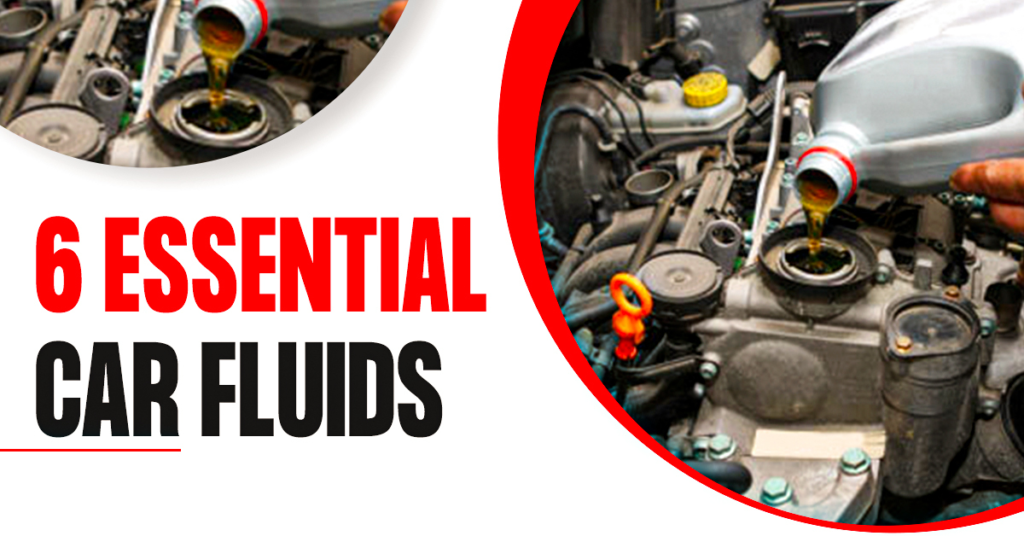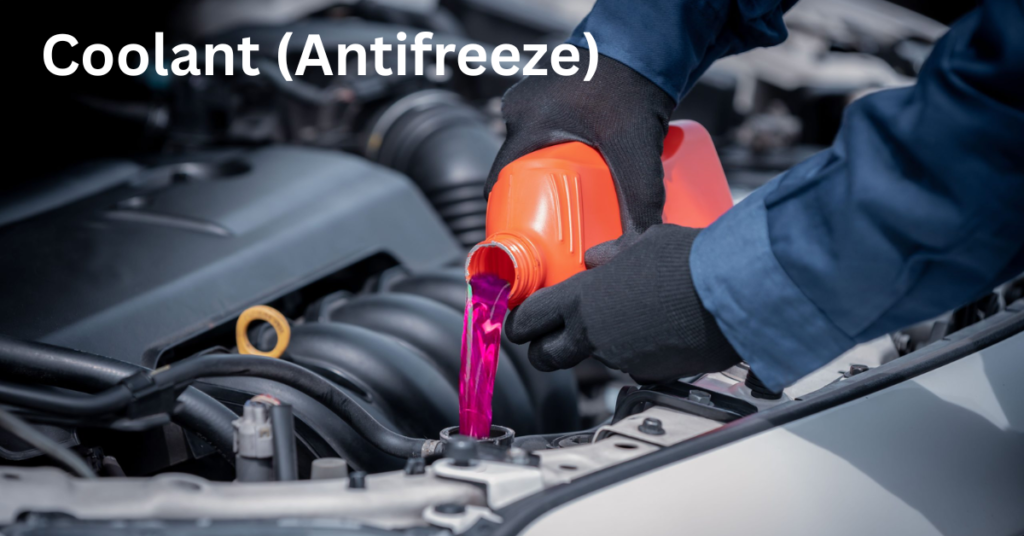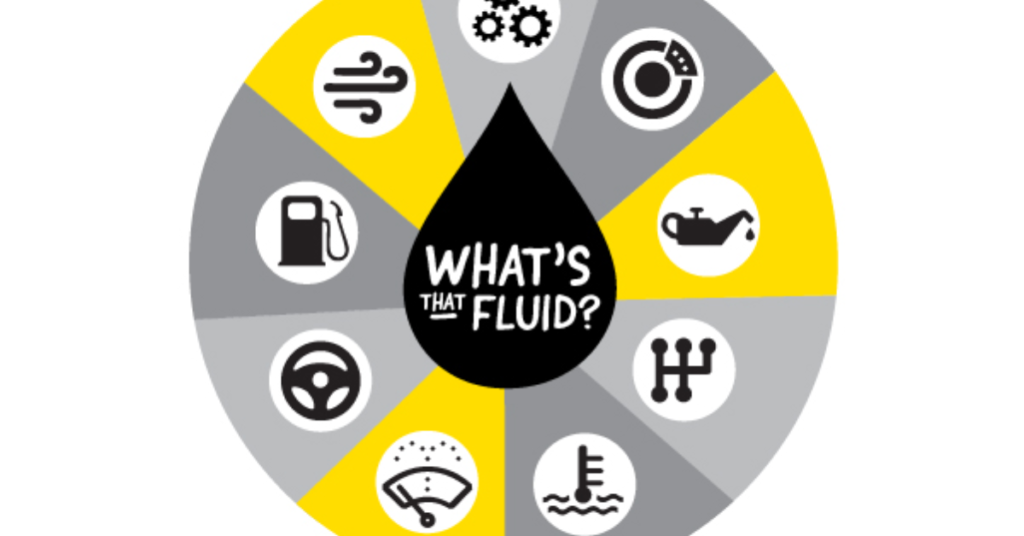Your car relies on six essential fluids to run smoothly—engine oil, coolant, brake fluid, transmission fluid, power steering fluid, and windshield washer fluid. Neglecting them can lead to poor performance, breakdowns, or even engine failure.
Surprisingly, 90% of vehicle breakdowns are caused by low or contaminated fluids, according to AAA. The good news? Checking and topping them off is easy, quick, and can save you thousands in repairs.
In this guide, we’ll walk you through how to check each fluid properly, when to top them off, and what warning signs to watch for. No mechanic experience needed—just a few minutes and basic tools!
Step-by-Step: How to Check & Refill Car Fluids

1. Engine Oil
Why it matters: Lubricates engine parts to prevent overheating and wear.
✅ How to check:
- Park on level ground and wait 5–10 minutes after turning off the engine.
- Pull the dipstick, wipe it clean, reinsert, then pull it out again.
- Check the level—it should be between the “MIN” and “MAX” marks.
⚠️ Warning Signs:
- Oil is dark, gritty, or smells burnt → Needs a change.
- Level is below MIN → Add oil immediately.
🛠️ How to top off:
- Use the oil type recommended in your owner’s manual.
- Add a little at a time to avoid overfilling.
2. Coolant (Antifreeze)

Why it matters: Prevents engine overheating in summer and freezing in winter.
✅ How to check:
- Locate the coolant reservoir (usually a translucent tank with “MIN/MAX” lines).
- Check the level when the engine is cool (hot coolant can spray out!).
⚠️ Warning Signs:
- Coolant is discolored (rusty or sludgy) → Needs a flush.
- Frequent low levels → Possible leak (check hoses and radiator).
🛠️ How to top off:
- Use a 50/50 mix of coolant and distilled water.
- Never open the radiator cap on a hot engine!
3. Brake Fluid
Why it matters: Ensures proper braking power and safety.
✅ How to check:
- Find the brake fluid reservoir (near the firewall, labeled “DOT 3” or “DOT 4”).
- Check the level—should be between MIN and MAX.
⚠️ Warning Signs:
- Fluid is dark brown or black → Needs replacement.
- Spongy brake pedal → Could indicate air in the system (get it bled).
🛠️ How to top off:
- Use the correct DOT-rated fluid (check your manual).
- Avoid spills—brake fluid damages paint.
4. Transmission Fluid
Why it matters: Keeps gears shifting smoothly (critical for automatic transmissions).
✅ How to check (Automatic):
- Start the engine, shift through gears, then park.
- Pull the transmission dipstick (often red-tipped).
- Fluid should be pink/red and smell sweet (not burnt).
⚠️ Warning Signs:
- Fluid is brown or smells burnt → Needs a change.
- Low fluid → Can cause jerky shifting or transmission failure.
🛠️ How to top off:
- Use the exact type specified in your manual (wrong fluid can damage the transmission).
5. Power Steering Fluid
Why it matters: Makes steering smooth and effortless.
✅ How to check:
- Locate the power steering reservoir (often labeled).
- Check the level—should be between MIN and MAX.
⚠️ Warning Signs:
- Fluid is dark or foamy → Needs replacement.
- Whining noise when turning → Low fluid or pump failure.
🛠️ How to top off:
- Use the correct fluid type (some cars use ATF).
6. Windshield Washer Fluid
Why it matters: Keeps your windshield clean for safe driving.
✅ How to check:
- Open the washer fluid reservoir (usually a blue cap).
- Fill until full—no risk of overfilling.
⚠️ Warning Signs:
- Streaky windshield → Dirty or low fluid.
- Frozen in winter → Use winter-grade fluid.
🛠️ How to top off:
- Use any washer fluid (summer or winter blend).
Fluid Check Checklist
| Fluid | Check Frequency | Top-Off Fluid Type |
|---|---|---|
| Engine Oil | Monthly | Synthetic/Conventional |
| Coolant | Every 3 months | 50/50 Coolant Mix |
| Brake Fluid | Every 6 months | DOT 3 or 4 |
| Transmission Fluid | Every 6 months | ATF (Check manual) |
| Power Steering | Every 6 months | PS Fluid or ATF |
| Washer Fluid | Monthly | Summer/Winter Blend |
FAQs: Fluid Maintenance Explained
1. How often should I check my car fluids?
✔ Monthly for oil/washer fluid, every 3–6 months for others.
2. Can I mix different brands of fluids?
✔ Yes, but only if they’re the same type (e.g., DOT 3 with DOT 3). Never mix coolant colors!
3. What happens if I overfill engine oil?
✔ Excess oil can cause foaming, leaks, or engine damage. Stick to the dipstick’s “MAX” line.
4. Why is my coolant level always low?
✔ Possible leak (check hoses, radiator, water pump) or internal engine issue.
5. Can I use water instead of coolant in an emergency?
✔ Short-term only—water lacks anti-corrosion and anti-freeze properties.
6. Is brake fluid replacement necessary?
✔ Yes! It absorbs moisture over time, reducing braking performance. Replace every 2 years.

